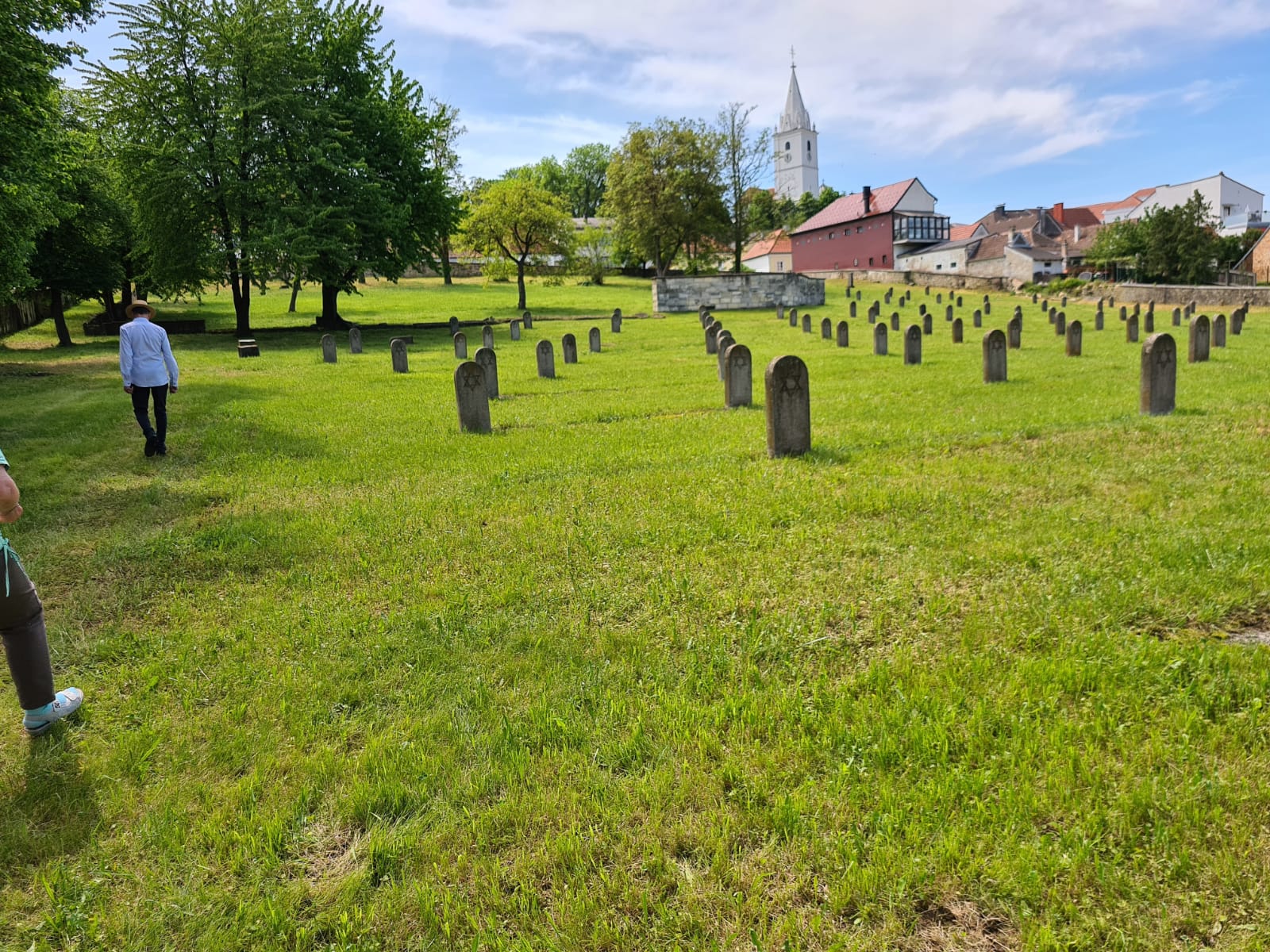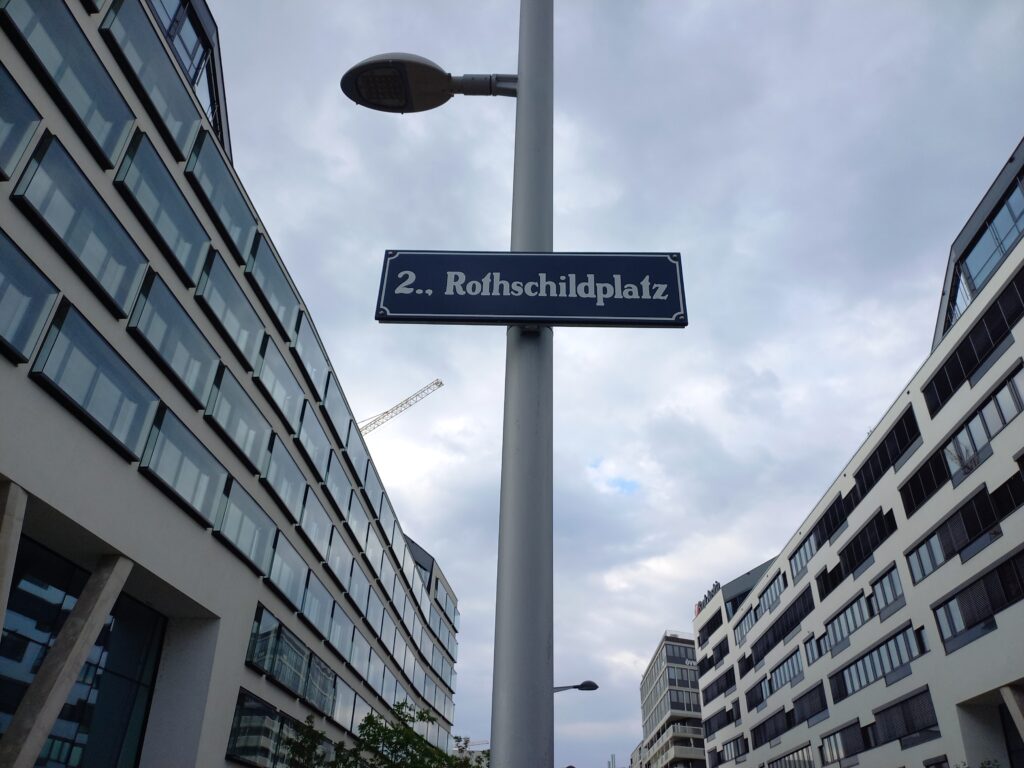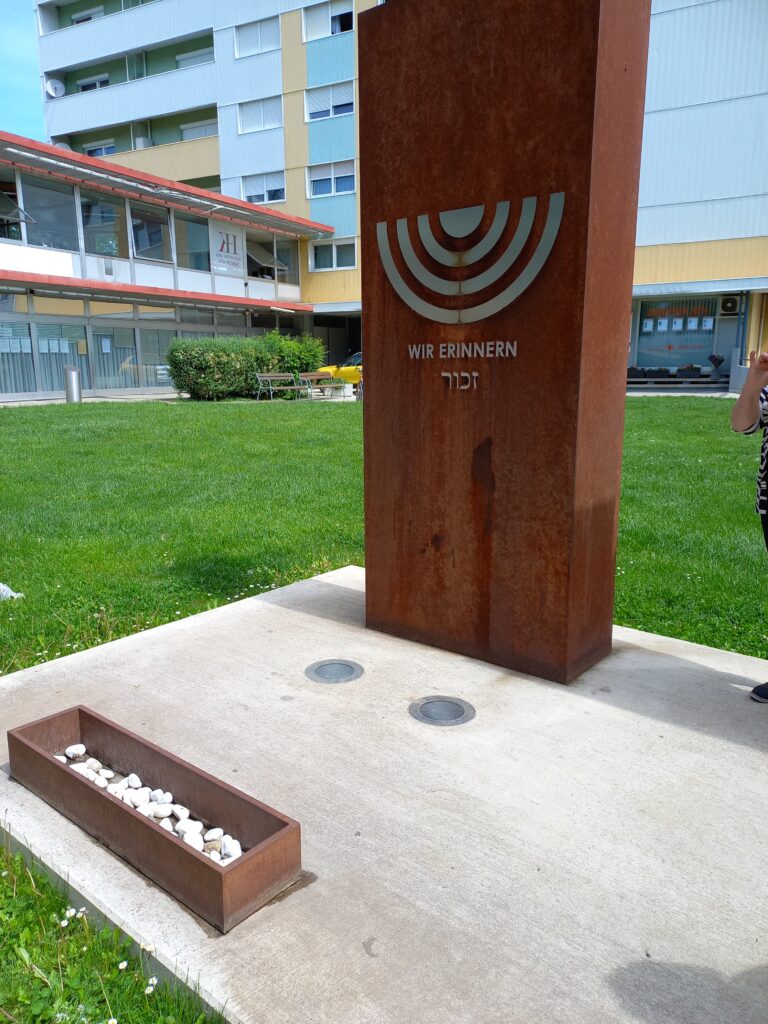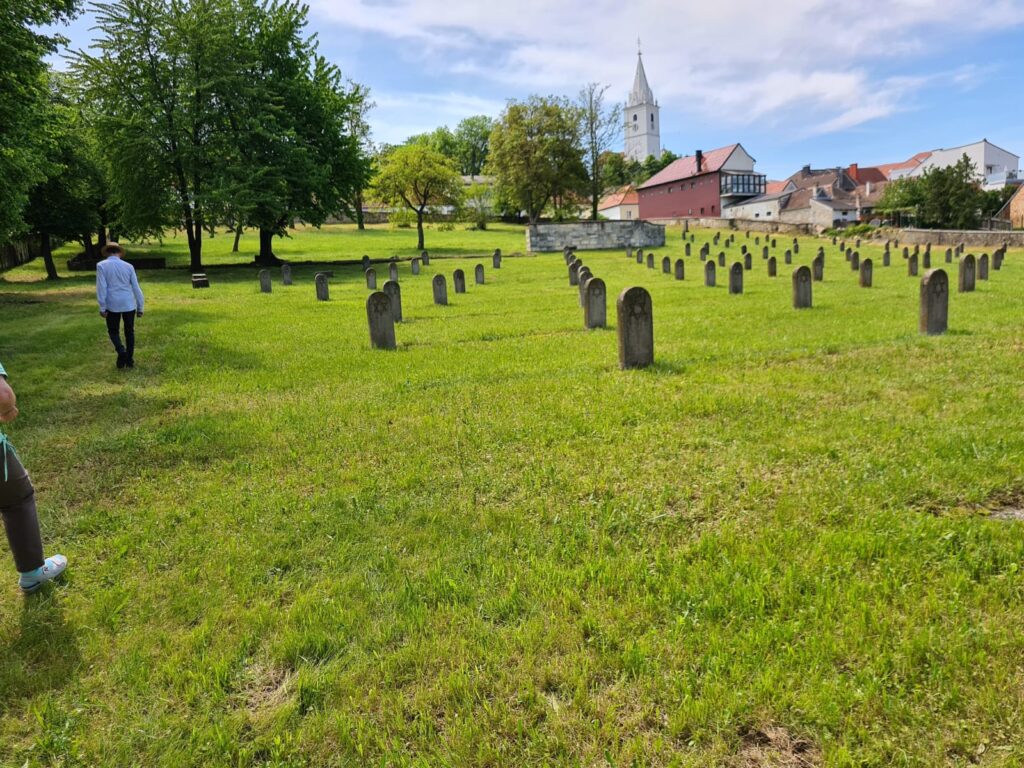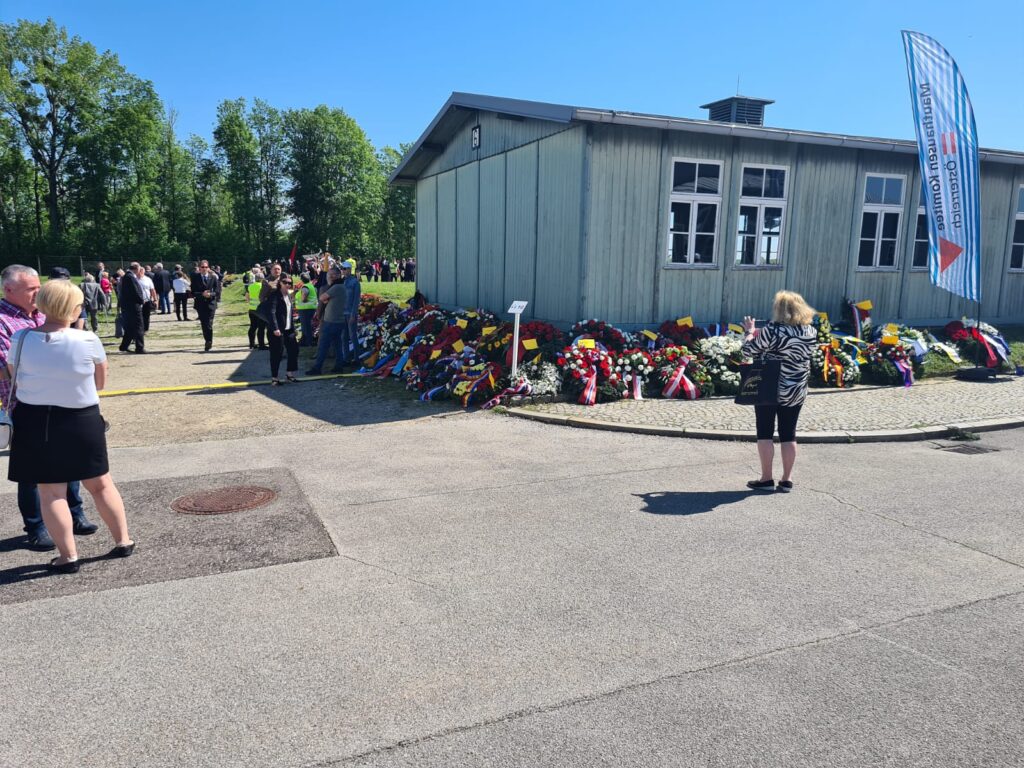We were guests of the association HILFE und HOFFNUNG in Vienna. The association is known in Finland as “Eeva Huberin Työn Tuki Ry”. We were a total of 10 people.
May 11, 2022 On the day of arrival, Hannu Ylitalo picked us up from the airport and we drove together to a guesthouse in the 1st district. In the canteen of the guesthouse, Hannu gave us all a warm welcome. After a short prayer together, many practical things were discussed, e.g. Corona passports and tests. Afterwards we went via the nearby Schwedenplatz to Morzinplatz, where the Gestapo memorial is located.
May 12, 2022 There was a tram ride to Schönbrunn Palace, where we were guided through the old imperial summer residence. After a short refreshment at the guesthouse we were ready for the visit to the opera. In the canteen of the guesthouse on the 8th floor I gave the group a brief insight into the opera “Figaros Hochzeit” and then we took the tram to the Vienna State Opera to see a performance of this opera up close.
May 13, 2022 Elisabeth Baumegger, the secretary of HILFE und HOFFNUNG, came to the guesthouse in the morning and we went with her on a “Walk through Jewish Vienna”. Elisabeth told us about discriminatory politics over the centuries. It wasn’t just the repeated large-scale expulsions, but also the segregation of Viennese Jews into the second district of Vienna – on the other side of the Danube Canal. The major expulsions of the Jews were also carried out with the intention of no longer having to pay the accumulated debts to the Jewish moneylenders.
Elisabeth took us to the Morzinplatz building, which was constructed in 1967 to replace the destroyed Hotel Metropol, which had housed the local German Gestapo headquarters during the Nazi era. An employee of the Documentation Archive of the Austrian Resistance / DÖW granted us access to the memorial room there, which reminds of the Nazi history of this place in words and pictures.
Then we walked along the U2 platform at Schottenring to the other side of the Danube Canal into the 2nd district of Vienna. When going to the elevator at the U2 exit Herminengasse, Elisabeth explained to us the installation art affixed there, which traces the deportation of Jewish citizens housed in collective apartments in the houses on Herminengasse to the many Nazi concentration camps (Michaela Melian: Herminengasse https://www.wien .gv.at/presse/2017/10/19/wiener-linien-koer-in-u2).
Each of the many black lines represents a Jewish person who was deported from one of the houses on Herminengasse to the Nazi concentration camps.
After taking the elevator up, we entered Herminengasse and discovered many stones of remembrance embedded in the sidewalk in front of the residential buildings. On these brass plates are the names and biographical dates of those Jewish people who, until their deportation by Nazi Germany, were housed in collective apartments in the respective houses after they had been forced to move from their original residences all over Austria to the “Jewish Quarter”, the second district of Vienna. Next to the entrance to the house at Herminengasse 6 are the stones of remembrance for the Zaidman family, which Celia Wortman from California initiated and financed for her relatives on her mother’s side and with the implementation of which HILFE und HOFFNUNG was able to help (see https://www.hilfeundhoffnung.at/?p=1008&lang=en).
We then took the tram and bus to a square called “Judenplatz”. We ate there in a Greek restaurant which is in the immediate vicinity of the Memorial to the Victims of the Holocaust. This memorial is reminiscent in size and shape of the gas chambers of Auschwitz, which I have already visited. I was very impressed.
From Judenplatz we went on to Renngasse 1, where the building of the former hotel “Zum Römischen Kaiser” is still located, which initially served the founder of the Viennese branch of the Rothschild dynasty, Salomon Mayer Freiherr von Rothschild, as the company headquarters, as he was Jewish and thus not allowed to acquire real estate in Vienna. It was only when he was awarded honorary citizenship in 1843 in recognition of his services to Vienna’s financial affairs that he was able to purchase real estate. Then he finally acquired the entire hotel “Zum Römischen Kaiser”. In the adjoining building at Renngasse 3, the S. M. v. Rothschild Private Bank was situated until the year 1938. Today the Schoellerbank resides here, which for security reasons did not allow us to visit the “Rothschild Hall”, which still exists inside the building.
Louis Nathaniel von Rothschild (1882 – 1955), the last banker of the Viennese Rothschild dynasty, compiled the pensions for his employees here at Renngasse 3 shortly before the annexation of Austria to the German Nazi Reich (after WWII the Second Republic of Austria was to secure these pensions after Louis N. von Rothschild brought his restituted possessions into a foundation and emigrated to Vermont/USA for good as he was convinced that “this is no longer the Austria that I used to know.”) and thus missed the timely departure. When he finally wanted to fly away, he was arrested at Aspern airfield and held in solitary confinement at the Gestapo headquarters on Morzinplatz for a year until he signed a document that handed over all his possessions to the German Reich.
The file number of this lost Gestapo document is the last entry in the land register for the property at Geweygasse 6 in the 19th district of Vienna, where the Rothschild family’s botanical garden used to be (“Rothschild Gardens”). Today, this area of the Hohe Warte is officially called “Rothschild Garden” again, after having been part of Heiligenstädter Park for a long time. In the year 2000 Elisabeth suggested the renaming of this garden after the Rothschild banking dynasty as it was so important for the economy of the City of Vienna and the entire k. u.k. Monarchy (e.g. founding of the Creditanstalt). Much later, she found out by chance from a newspaper article that the City of Vienna had complied with this suggestion in 2016. At the same time, Rothschild Square was created in a newly developed area in the 2nd district of Vienna.
Finally, we drove to Stephansplatz, near which the Jewish Museum Dorotheergasse is located. However, there was not enough time to visit a museum as part of the “Walk through Jewish Vienna”.
In the evening we attended the Shabbat service at the Synagogue at Seitenstättengasse. This synagogue was once saved from destruction by the German Nazis because it in no way stands out from the rest of the streetscape but fits into the block like a residential building. It was also important to the Nazis to be able to see the registers housed in this main synagogue, including the addresses of all Jews living in Austria, so that they could later deport all Jewish Austrians.
The Shabbat service started at 7:00 p.m. and went well, some well-known songs were also heard. Then “Shabbat Shalom” wishes were exchanged. We were then invited to have a kosher Shabbat meal at our own large table in the adjoining Community Center of the Israelite Religious Community.
May 14th, 2022 On Saturday we visited the Memorial in Remembrance of the Former Jewish Community of Mattersburg at the site of the former synagogue of Mattersburg in Burgenland. Our tour guides were the chairman of the association HILFE und HOFFNUNG KR Michael Feyer with his wife Anette, as well as Elisabeth. We were very grateful for Hannu’s well-versed translation of all the explanations into Finnish. The Memorial in Remembrance of the Former Jewish Community of Mattersburg was personally initiated and implemented by Michael Feyer. It consists of a narrow metal doorway with the inscription “Shoah” and three large metal columns of rusted iron with the inscriptions:
for the present
WE REMEMBER
for the past
1938 ALL JEWS OF MATTERSBURG WERE EXPELLED
MANY WERE MURDERED
THE JEWISH TEMPLE WHICH STOOD HERE WAS DEVASTATED AND PLUNDERED DURING THE POGROM NIGHT AND IN 1940 IT WAS BLOWN UP TOGETHER WITH THE GREATER PART OF THE JEWISH QUARTER
AFTER OVER 400 YEARS, JEWISH LIFE IN MATTERSBURG WAS VIOLENTLY ENDED BY THE NAZIBARBARS
for the future
ALL EVIL NEEDS TO TRIUMPH IS THE SILENCE OF THE MAJORITY
We then visited a Jewish cemetery that had been in use for over 400 years. In the 1990s, tombstones with the Star of David symbol were erected as memorials to prevent the site from being used as a playground.
At the end of our stay in Mattersburg we went to a nearby terrace restaurant for ice cream.
In the evening we were invited to the Ylitalo family in the 18th district of Vienna, where we spent the evening with a nice get-together including music and singing.
May 15, 2022 We left early in the morning to experience the annual Liberation Festival at the Mauthausen Concentration Camp Memorial.
The buildings of the former concentration camp are in a scenic location on top of a hill. Allied soldiers liberated the prisoners of the Mauthausen concentration camp 77 years ago. The celebration consisted of a large international flag parade with welcome speeches. There was a large number of nationalities and organizations. The Poles had come in large numbers. This is understandable as Poland was one of the countries hardest hit by World War II. It was then divided by the Germans and the Russians, and it wasn’t easy to be with either of them. The Italians sang the well-known partisan song “Bella Ciao”.
18.5.2022 Departure to the airport. The room keys were returned and we walked down the street with our suitcases. Hannu had ordered two taxis for us.
Jarmo Majamaa
(historical details supplemented by Elisabeth Baumegger)

